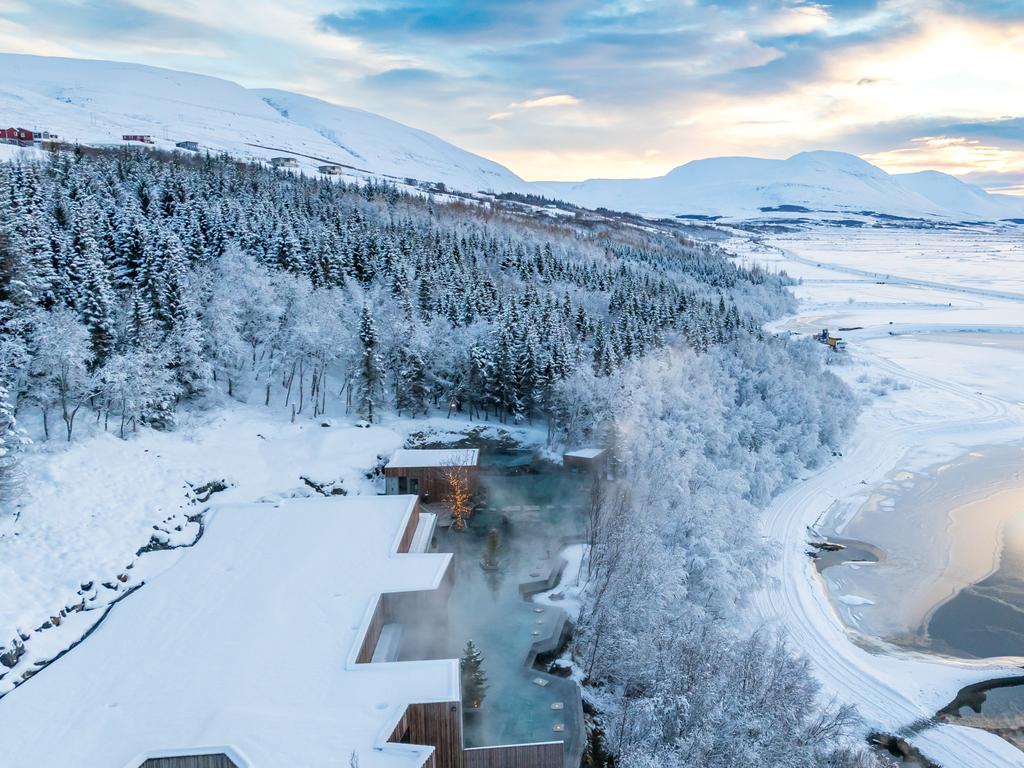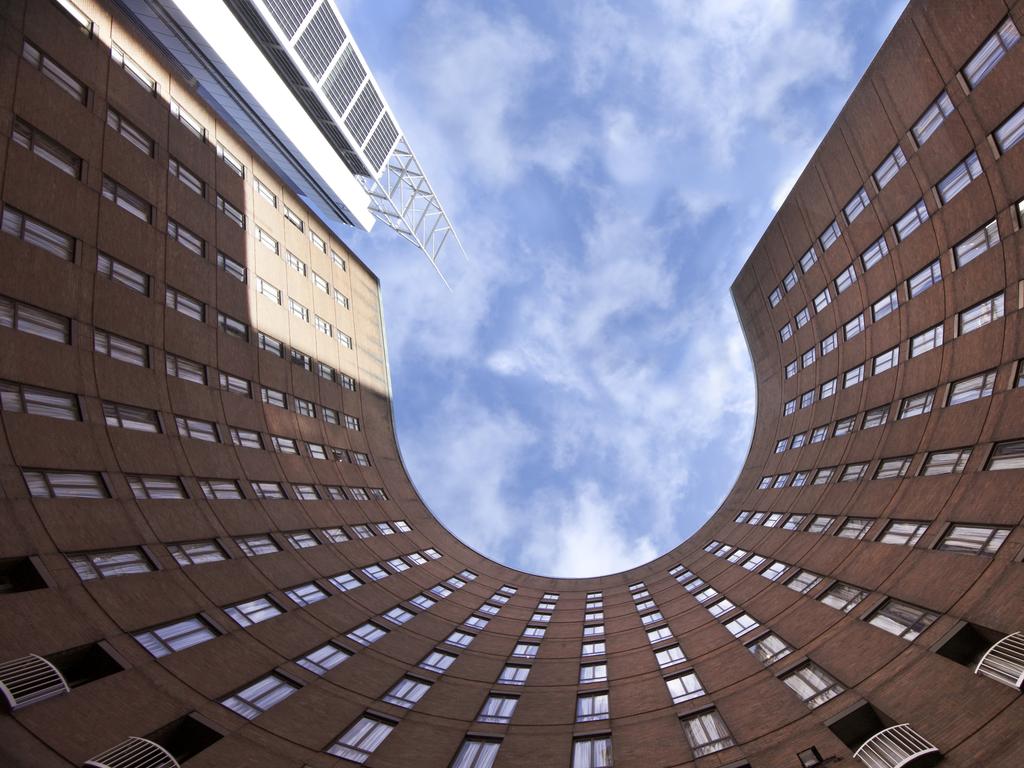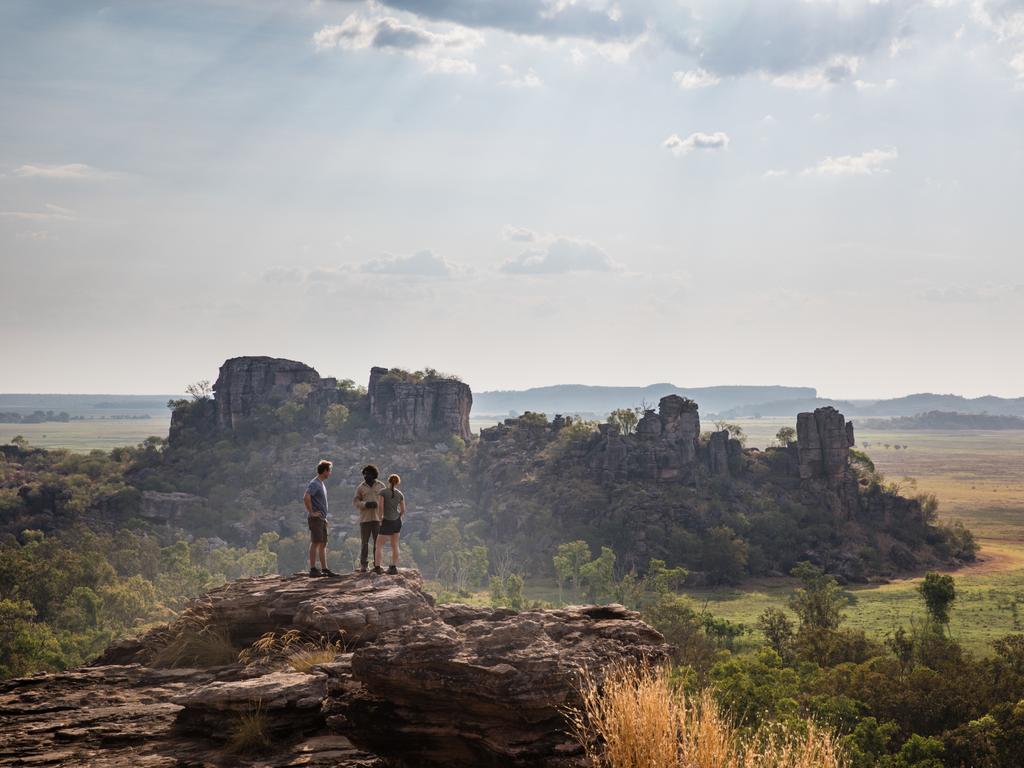Chase the Northern lights onboard a Viking cruise
It’s impossible not to be awed by the seafaring skills of the Norsemen, who used wooden boats and oars to journey through this remote and unforgiving place. | WATCH VIDEO
We are sailing under a blanket of heavy fog somewhere between Canada and the southern reaches of Greenland in the Labrador Sea. All is white outside, with any trace of Newfoundland smothered in mist. If I were a Viking, I might release one of my ravens and follow its flight path to find solid ground. Fortunately, our ship, the appropriately named Viking Star, has far more sophisticated navigation tools at its disposal. Within hours, the haze clears and the jagged peaks of Greenland loom into view like a Tolkien-esque fever dream.
As we approach the port town of Qaqortoq (pronounced Kak-oor-tok), glowing white icebergs appear on the horizon. They are a hodgepodge of curious shapes. I spy a surfaced submarine, a whale, ruined castle and a shipwreck lurching to one side. When I send a photo to a relative at home they respond with a quip straight from the mouth of the Titanic’s first officer: “Rudder hard a’ port!” But there will be no such mishaps here.

It’s a scene that would have been familiar to Erik the Red, who according to the Viking sagas arrived in the area in 982AD. Exiled from Iceland for violent misdeeds, he sought out a new settlement to the west and dubbed the place Greenland. The nomenclature was a clever marketing ploy designed to entice his fellow Norsemen to follow. In reality, he’d left everything “green” behind. Greenland is predominantly white, covered in an ice sheet that spans 1.7 million sq km and in places is more than 2km thick. Nonetheless, the ruse prompted hundreds of Norsemen to sail in his wake in their quest for land. They certainly found it; so far more than 500 Viking sites have been discovered up and down Greenland’s west coast.
The Vikings are a common thread running through this 15-day voyage, which begins with a blue-bird departure from New York City. One of the first ports of call is L’Anse aux Meadows in the Canadian province of Newfoundland and Labrador. This place knocks Christopher Columbus off his perch as the man to “discover” North America. Apart from the fact people are known to have lived on the continent for at least 15,000 years, L’Anse aux Meadows presents irrefutable proof that the Vikings got here well before him. Discovered in the 1960s, the UNESCO World Heritage site has been extensively excavated to reveal the remains of eight Norse buildings dating from the 11th century and a wide array of artefacts, from cloak pins and scissors to lamps, nails and weaving tools.

The sagas state that Leif Erikson, son of Erik the Red, explored the coastline on an expedition from Greenland, and there’s speculation that L’Anse aux Meadows could be the precise location where he settled. Replica longhouses show how the seafarers lived and, despite the Vikings’ fierce reputation, it wasn’t all pillaging and mayhem. Instead, the scene painted is one of relative pastoral and domestic bliss, with livestock evidently brought across the waves, along with women and children.
The nearby replica village of Norsted brings the settlement back to life. Women in Viking dress are spinning wool into yarn and knitting hats using traditional techniques. Two men in Viking costumes are chatting in English but in Canadian accents so thick and foreign it could be mistaken for Old Norse. On display in a huge barn is Snorri, a replica cargo ship called a knarr. The 20m-long vessel was used in the late 1990s to re-create Leif Erikson’s voyage from Greenland. It took the modern-day sailors 87 days compared with the Norse explorer, who managed the same journey in about 14, although he boasted he could cover the distance in nine.

On the sturdy 930-passenger Viking Star, with all its hi-tech bells and whistles, it’s impossible not to be awed by the seafaring skills of the Norsemen, especially when traversing the same icy waters they sailed 1000 years ago in boats made of wood and powered by oars and woollen sails. I’m reminded of Shackleton’s treacherous 17-day rescue mission in a small timber boat to South Georgia Island, enduring unimaginably miserable conditions. Would such an undertaking have been the equivalent of just another sea jaunt for the Norse sailors?
Nor does the raw weather seem to bother the modern-day Greenlanders, almost 90 per cent of whom are Inuit. In lonely Qaqortoq and another small town, Nanortalik, we learn of their extraordinary resilience in a land where winter temperatures plummet to minus 50C. Kayaks made of timber and seal skin were an essential part of their hunting toolkit, and one fresh morning in Nanortalik three local men – head to toe in 21st-century drysuits – demonstrate their skills by performing full 360-degree capsizing manoeuvres.

On the day we leave Greenland, we sail through waters dotted with icebergs. In among them is a tiny triangle of white, which I assume is another berg until we are close enough to see it’s a small sail. My fellow passengers and I are aghast. The sun may be shining and the sky a diamond-cut blue, but the icy wind almost knocks us off our feet every time we venture on to the deck of Viking Star to take photos. This little yacht looks like a toy, dwarfed by cliffs 900m tall and bobbing on freezing waters that plummet to depths of 300m. Who in their right mind would set sail in such a remote and unforgiving place? It’s obviously not a quandary that troubled the intrepid Vikings.

We set course for Prince Christian Sound, a spectacular 100km fjord that slices through the southern tip of this gigantic country. When fog descends, cruise passengers can barely discern the sides of the fjord. But how’s our luck? The air is so clear, it seems we can see from the start of the sound to the end. Sharp peaks pierce the sky, their rocky sides scarred by formidable tectonic forces and ice. Waterfalls tumble down granite chutes carved over millennia. At 3.8 billion years old, these are some of the oldest rocks in the world. We see six glaciers, their chunky blue-white snouts jutting into the water. Passengers are captivated as the geological spectacle unfolds over about four hours, with the help of Ray Arvidson, a planetary scientist who is one of four engaging guest speakers on board.
Sea days offer the chance to slow down and find the rhythm of the ship. Mornings might begin at the gym, followed by breakfast in the World Cafe, a casual venue with a mix of self-serve and table-waited offerings. There are talks in the theatre (which can also be watched at guests’ convenience on the TV in their cabin), musical interludes, trivia competitions and board games, and the option of a soak, steam and freeze in the Nordic Spa. My happy place for lunch is Mamsen’s on Deck 7, a small eatery in the Explorers’ Lounge where bowls of soup and perfectly plated open sandwiches fit the bill. The lounge’s wall of glass affords 180-degree vistas across the bow and the comfy sofas become a preferred perch for sipping pre-dinner negronis, unless I’m drawn downstairs to the talented piano-violin duo playing at the comfortable Viking Bar.

The ship’s main restaurant, an a la carte venue serving international fare, is a convivial space where conversations inevitably flow between neighbouring tables. Another option is the Chef’s Table, an experimental eatery where, on my sailing, chefs are putting innovative twists on Indian and Mexican cuisine. An Italian joint, Mandfredi’s, becomes a personal favourite during the voyage. Styled around the theme of a traditional Rome trattoria, it’s popular but lovely wait staff Hendra and Darma are always able to conjure a table at short notice. I’m not prepared to reveal the number of times I order the Caramello dessert, an indulgent trifecta of cake, ice cream and warm caramel sauce.
The days drift by, until halfway through the cruise I wake one morning to my first glimpse of Iceland. Viewed from the balcony of my deluxe veranda cabin, there are strings of green flat-topped mountain ranges that plunge into the ocean. Where is all the ice? It appears we have left the floes behind in Greenland, although that no doubt changes when the first snows arrive in October.

From our berth in Isafjordur, I join fellow guests on an excursion to Vigur Island, where Briton Felicity Aston and her Icelandic husband, Gisli Jonsson, have resided with their son for five years. It’s a life of splendid isolation, except between April and August when 7000 wild eider ducks and 100,000 puffins crowd on to this 2km-long strip of land to breed. Sadly, the birds have already departed during our September visit but Aston paints a vivid picture of a rowdy nesting season, when the ground swarms with life and a tonne of bird poop is deposited every day. No wonder the grass is so green. The couple enlist any help they can to harvest by hand precious duck down from thousands of nests. It’s a labour-intensive process that produces about 300kg of down; after cleaning, that’s reduced to a meagre 40-60kg. But with the likes of Japan and Germany paying up to €2000 ($3240) a kilo for the material, their efforts don’t go unrewarded.

Aston is energetic and ebullient, proving to be an enormously entertaining host as she conducts a tour of the island that once supported a 60-strong community. She points out the heritage-listed windmill, the only one of its kind remaining in Iceland (they have a tendency to catch fire in a gale), and describes waking during a wild storm to the sound of seaweed being hurled by the wind against her bedroom window. It’s only at the end of the tour that we glean something of this extraordinary woman’s past. It turns out she has an MBE for her polar endeavours, which include skiing solo across Antarctica – 1744km in 59 days – and leading the first British women’s crossing of Greenland. She and her husband met while completing a marathon drive to the South Pole. The two hours we spend with her are undoubtedly a highlight of the cruise.


From Isafjordur, we head to Akureyri, capital of Iceland’s north, where our voyage hits a sizeable snag. When Captain Olav Soevdsnes announces we are facing 60-knot winds and 8m waves if we continue as scheduled, it’s a relief to hear he is changing course. There’s disappointment that we will miss Seydisfjordur, Djupivogur and the island of Heimaey, but the bonus is we will have two full days in the capital, Reykjavik. Frankly, I’m delighted. The subsequent scramble for rescheduled shore excursions means I book an independent minibus tour of the so-called Golden Circle, which condenses some of Iceland’s most famous attractions into a rapid-fire six hours. On the list are Thingvellir National Park, a geothermal geyser, Gulfoss Waterfall and Kerid volcanic crater.

It’s a whirlwind outing on a tight schedule but our guide, Greta, is an easygoing host. First up is the national park, where the North American and European tectonic plates are slowly but undeniably drifting apart across a broad valley. It’s also where Iceland’s Althing, touted as the oldest parliament in the world, was first convened, in 930AD. Next is Geysir, which reliably spews water and steam 30m into the air every 10 minutes or so. It’s encircled by a wall of trigger-happy photographers, and I willingly join them to get “the shot”. Then it’s on to Gulfoss, just one of Iceland’s impressive waterfalls but a powerful example of what happens when glacial melt meets gravity. Our final stop is the Kerid caldera, formed 6500 years ago and filled with vivid turquoise water that, fortunately, isn’t going to shoot up or flow down any time soon. That’s four ticks for four sites that affirm the country’s notoriety as the “land of fire and ice”. But there’s a surprise in store.

As we drive back to Reykjavik, we stumble upon an unexpected sight. Sheep are being mustered beside the road by dozens of riders on hardy little Icelandic horses. Greta tells us the round-up happens annually to bring stock back after a summer grazing in the mountains. Everyone pitches in to help on a long day that culminates in a big knees-up, fuelled by copious quantities of alcohol. As our minibus approaches a roundabout, we see three cars with young blokes hanging out passenger windows, gripping bottles of liquor and cheering on the riders as they head to the party. They are having a hoot. I can’t help thinking the Vikings would have approved.
In the know
The 15-day Iconic Iceland, Greenland and Canada itinerary sails between Reykjavik and New York from May to August next year. It calls at Halifax and L’Anse aux Meadows in Canada, Qaqortoq and Nanortalik in Greenland, and Isafjordur, Akureyri, Seydisfjordur, Djupivogur, Heimaey and Reykjavik in Iceland. From $13,195 a person, twin-share, in a veranda stateroom. Book by November 15, 2024 and companions fly free on 2025-27 voyages.
Arctic Adventures runs multiple tours across Iceland. The six-hour Golden Circle Afternoon Tour costs $US88 ($130) an adult.
Penny Hunter was a guest of Viking Cruises.
If you love to travel, sign up to our free weekly Travel + Luxury newsletter here.





To join the conversation, please log in. Don't have an account? Register
Join the conversation, you are commenting as Logout